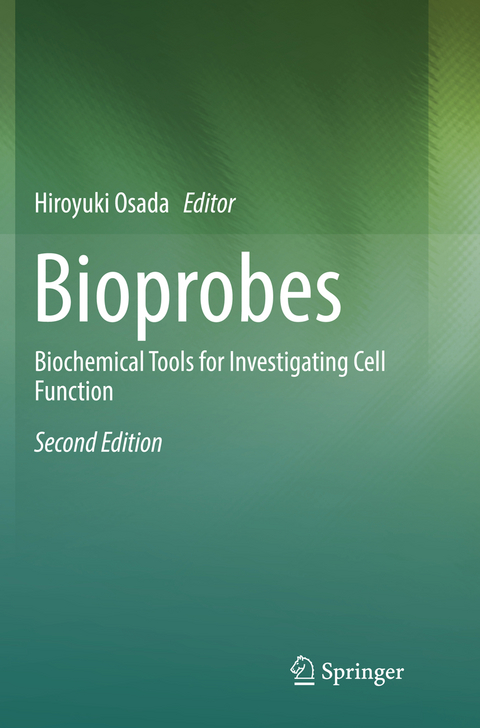
Bioprobes
Biochemical Tools for Investigating Cell Function
Seiten
2018
|
Softcover reprint of the original 2nd ed. 2017
Springer Verlag, Japan
978-4-431-56813-1 (ISBN)
Springer Verlag, Japan
978-4-431-56813-1 (ISBN)
This new edition provides the most advanced research using bioprobes on the chemical control of 1) cell cycle and differentiation, 2) epigenetics, 3) apoptosis and autophagy, and 4) immune response. New areas of investigation such as stem cell research, epigenetic research, and autophagy research have rapidly advanced in the past 10 years.
This new edition provides the most advanced research using bioprobes on the chemical control of 1) cell cycle and differentiation, 2) epigenetics, 3) apoptosis and autophagy, and 4) immune response. The “bioprobe”, first proposed in the first edition, has become an indispensable tool for chemical biology and has substantially assisted in the investigation of complex biochemical processes of cells. New areas of investigation such as stem cell research, epigenetic research, and autophagy research have rapidly advanced in the past 10 years. Including these new findings, this second edition supplies up-to-date information on the biochemical tools called bioprobes. Data on each bioprobe, such as chemical structure, origin, function, and references, are presented as one item in this volume. Readers will easily find useful information and will be able to determine the appropriate bioprobes to investigate cell functions. The information on bioprobes and their use in research makes this booka valuable source for researchers in diverse fields. Not only scientists in academia but also in the pharmaceutical industries will discover the most important information about small molecules useful for drug discovery.
This new edition provides the most advanced research using bioprobes on the chemical control of 1) cell cycle and differentiation, 2) epigenetics, 3) apoptosis and autophagy, and 4) immune response. The “bioprobe”, first proposed in the first edition, has become an indispensable tool for chemical biology and has substantially assisted in the investigation of complex biochemical processes of cells. New areas of investigation such as stem cell research, epigenetic research, and autophagy research have rapidly advanced in the past 10 years. Including these new findings, this second edition supplies up-to-date information on the biochemical tools called bioprobes. Data on each bioprobe, such as chemical structure, origin, function, and references, are presented as one item in this volume. Readers will easily find useful information and will be able to determine the appropriate bioprobes to investigate cell functions. The information on bioprobes and their use in research makes this booka valuable source for researchers in diverse fields. Not only scientists in academia but also in the pharmaceutical industries will discover the most important information about small molecules useful for drug discovery.
Dr. Hiroyuki Osada (RIKEN Center for Sustainable Resource Science, Wako, Saitama, Japan)
1. Trends in bioprobe research.- 2. Cell proliferation and differentiation.- 3. Epigenetics.- 4. Apoptosis and autophagy.- 5. Adaptive and innate immune Systems.- 6. Bioprobes at a glance.
| Erscheinungsdatum | 18.08.2018 |
|---|---|
| Zusatzinfo | 10 Illustrations, color; 163 Illustrations, black and white; VIII, 384 p. 173 illus., 10 illus. in color. |
| Verlagsort | Tokyo |
| Sprache | englisch |
| Maße | 155 x 235 mm |
| Themenwelt | Naturwissenschaften ► Biologie ► Biochemie |
| Naturwissenschaften ► Biologie ► Genetik / Molekularbiologie | |
| Naturwissenschaften ► Biologie ► Mikrobiologie / Immunologie | |
| Naturwissenschaften ► Biologie ► Zellbiologie | |
| Technik ► Umwelttechnik / Biotechnologie | |
| Schlagworte | Chemical biology • drug development • Natural Products • Small molecule inhibitors • Target identification of bioactive compounds |
| ISBN-10 | 4-431-56813-1 / 4431568131 |
| ISBN-13 | 978-4-431-56813-1 / 9784431568131 |
| Zustand | Neuware |
| Haben Sie eine Frage zum Produkt? |
Mehr entdecken
aus dem Bereich
aus dem Bereich


